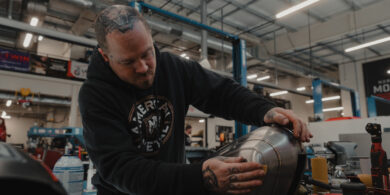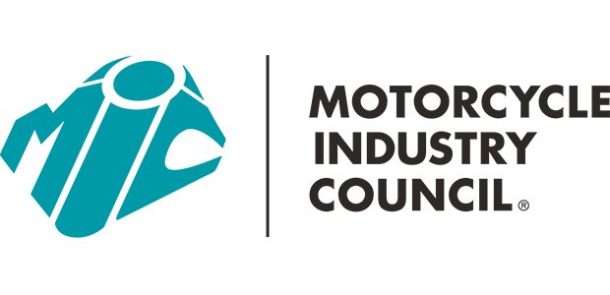Nov. 12, 2007 – The struggle over U.S. steel tariffs
By Steve Bauer
Managing Editor
In a victory for U.S. steel makers and a blow to automobile and powersports manufacturers, the federal government agreed to continue tariffs on imports of certain steel products from several countries, including one of the world’s largest steel exporters, China.
The U.S. International Trade Commission (ITC) ruled the U.S. would retain tariffs on hot-rolled steel from China, India, Indonesia, Taiwan, Thailand and Ukraine, but eliminated them for Argentina, Kazakhstan, Romania and South Africa.
Although a boon for the struggling U.S. steel industry, the tariff extension was disputed by auto manufacturers General Motors Corp., Ford Motor Co. and Chrysler, along with several powersport aftermarket companies. All complained to the ITC that the decision to keep the tariffs will continue to hamper their businesses by forcing them to absorb millions of dollars in tariffs, which is ultimately passed down to the consumer.
Struggling steel companies
U.S. steel companies have been in a tailspin since a financial crisis swept Asia, Latin America and Russia in 1997. Foreign producers, unable to sell their products at home, ramped up exports to the United States. President Bush, in an effort to help the struggling industry, began imposing
8-30 percent tariffs on imported steel in 2001, allowing for the tariffs to be reviewed every three years by the ITC.
United Steelworkers of America President Leo Gerard says domestic producers sell more hot-rolled steel than any other flat-rolled product, and that if China is allowed to freely export its vast steel resources to the U.S., the steel industry would eventually suffocate trying to match the cheap prices China can sell its product for.
“Hot-rolled steel is without question one of the most vital steel products made in the U.S.,” he said. “Not only is it used in automotive, powersport and construction applications, among others, but it is processed internally to make corrosion-resistant steel, cold-rolled steel, tin mill, steel pipe and tube. China’s record with importing product into the United States leaves absolutely no doubt that it will flood this market if it gets the chance.”
Gerard says China’s production was only
72 percent of the U.S. production in 2000, but that this year China’s production will equal
374 percent of U.S. production.
“We’re extremely pleased with the ITC’s decision,” he said. “The predatory practices by some of the largest foreign steel producers, such as China, which often illegally sells its product below production costs, is something that can only be controlled by these tariffs. Thousands of workers are dependent upon the steel we produce at home to support themselves and their families. I would hate to imagine the results if those tariffs are eliminated.”
Steel consumers feel the pain
According to the United Steelworkers of America, about 60 million tons of hot-rolled steel is consumed annually and is used to make everything from automobiles and motorcycles, to brakes, engine parts and even household appliances.
In a press release, William Gaskin, president of the Precision Metalforming Association, a group of smaller manufacturers, called the decision “a tough blow for American steel consumers.”
“The ITC missed the fact that American companies need steel products at globally competitive prices,” he said, “and that the U.S. steel industry is competitive, profitable and no longer needs government protection from cheap production overseas.”
Although the ruling is an easier pill to swallow for powersport companies that have dealt with the tariffs for several years, there’s no question the tariffs affect manufacturing costs, and in many cases the costs are passed down to the consumer. A 2002 article from USA Today estimates the tariff increase forces manufacturers to pass on price increases of up to 10 percent.
“We do our best to absorb as much of the cost as possible, but there comes a point where as a company you either pass the costs down or take on losses,” said Jeff Johnson of Pirelli Tire North America. “When you add in the skyrocketing costs of other raw materials, such as oil, it just makes our job as a manufacturer that much harder.”
Many larger powersports OEMs declined to comment on the issue citing market competition, but there’s no question the issue is a serious one for many of the major motorcycle and ATV manufacturers.
“Just like the auto manufacturers, powersport OEMs use a tremendous amount of hot-rolled steel in their vehicles,” said Cory Jonson, aftermarket sales and marketing manager for Sunnex Inc., which supplies brake parts to several major OEMs.
“I believe the more pressure these manufacturers place on the federal government to lift these tariffs, they’ll have no choice but to comply because there’s just too much money on the line for these companies,” he said.
For American Suzuki Motor Corp., the tariffs won’t impact how many ATVs it manufacturers in the U.S. every year. Because Suzuki only builds its KingQuad ATVs in the U.S., the amount of vehicles they produce annually is dictated by consumer demand and not by natural resource costs, said Rod Lopusnak, the ATV operations manager for American Suzuki.
Johnson believes the upcoming election will have a large impact on whether the tariffs remain in place, but says with the price of oil and the continuing slow economy and powersports market, it’s only a matter of time before consumers’ voices are heard as well.
“People are barely able to pay their mortgages today, and I know as a consumer if these tariffs are standing in the way of me getting a cheaper car, motorcycle or refrigerator, I’m completely in favor of more competition,” he said. “If China can legally offer their product to manufacturers for a lower price than U.S. steel companies, they shouldn’t be penalized for it, because ultimately who ends up paying for it is the consumer.”




